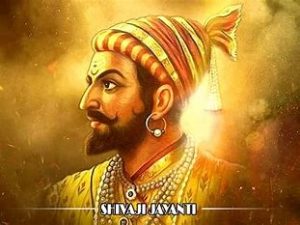Contents:
- Commitment to India-US partnership
- Damage to Chatrapati Shivaji statue
Commitment to India-US partnership
Focus: Bilateral, Regional and Global Groupings and Agreements involving India and affecting India’s interests; India-US relation.
Why in News?
Recently, the Prime Minister onveyed his appreciation for President Biden’s deep commitment the India-US Comprehensive Global Strategic Partnership, which is based on shared values of democracy, rule of law and strong people-to-people ties.
U.S.-India relations
- The U.S.-India partnership is founded on a shared commitment to freedom, democratic principles, equal treatment of all citizens, human rights, and the rule of law.
- The United States and India have shared interests in promoting global security, stability, and economic prosperity through trade, investment, and connectivity.
- The United States supports India’s emergence as a leading global power and vital partner in efforts to ensure that the Indo-Pacific is a region of peace, stability, and growing prosperity.
- The strong people-to-people ties between our countries, reflected in a four million-strong Indian American diaspora, are a tremendous source of strength for the partnership.
- In December 2019, the United States hosted the second 2+2 Ministerial Dialogue in Washington led by the U.S. Secretaries of State and Defense and their Indian counterparts, at which both sides reaffirmed India’s status as a Major Defense Partner and deepened cooperation on maritime security, interoperability, and information sharing.
- While the 2+2 serves as the premier dialogue mechanism between the United States and India, there are more than thirty bilateral dialogues and working groups, which span all aspects of human endeavor, from space and health cooperation to energy and high technology trade.
- These include the U.S.-India Counterterrorism Joint Working Group, which was established in 2000 and is among our oldest government to government dialogues, as well as the Strategic Energy Partnership, Cyber Dialogue, Civil Space Working Group, Trade Policy Forum, Defense Policy Group and many more.
Damage to Chatrapati Shivaji statue
Focus: GS I- History
Why in News?
Indian Navy expressed deep concern for the damage caused to the statue of Chhatrapati Shivaji Maharaj that was unveiled on Navy Day on 04 Dec 2023 as a dedication to the citizens of Sindhudurg.
- Along with the State Government and concerned specialists, the Navy has deputed a team to immediately investigate the cause of this unfortunate accident and initiate steps to repair, restore and reinstate the statue.
About Chhatrapati Shivaji

- Born on February 19, 1630, at Shivneri Fort in Pune.
- He was born to Shahaji Bhonsle, a Maratha general who ruled the Bijapur Sultanate’s jagirs of Pune and Supe. Shivaji’s mother was Jijabai, a devout woman who had a strong religious influence on him.
- Shivaji’s name was derived from the name of a provincial deity, Goddess Shivai.
- He created the Maratha Empire by carving out an enclave from the crumbling Adilshahi sultanate of Bijapur.
- He was formally crowned Chhatrapati (Monarch) of his dominion in Raigad in 1674.
- Religious tolerance and functional integration of the Brahmans, Marathas, and Prabhus ensured the kingdom’s security.
- With the support of a disciplined military and well-structured administrative organisations, he constructed a competent and progressive civil rule.
- He had a ministerial council (Asht Pradhan) to advise him on state problems, but he was not bound by it. He had the authority to appoint or fire them.
- He pioneered non-conventional methods (guerrilla warfare) and used strategic elements such as terrain, speed, and surprise to innovate military tactics.
- To defeat his larger and more powerful opponents, he concentrated on pinpoint attacks.
- Although the courageous warrior died in 1680, he is remembered for his bravery and intelligence.
Shivaji and the Mughals
- Shivaji’s meteoric rise posed challenges to the suzerainty of the Mughals.
- His first direct encounter with the Mughals was during Aurangzeb’s Deccan campaigns of the 1650s.
- As Aurangzeb went North to fight for the Mughal throne, Shivaji was able to seize further territory.
- His tactics against the Mughals were adapted to the specific nature of his force and the flabby Mughal armies. Using swift cavalry attacks, he would raid and pillage Mughal strongholds.
- While on the rare occasion he would engage in battle to actually capture and hold Mughal positions, most often, he would simply cause much menace, raid the treasury, and leave with the Mughals in terror and disarray.
- Famously, in 1664, he attacked the port of Surat (now in Gujarat) and plundered one of the richest and busiest commercial towns of Mughal India while the local governor hid in a nearby fort.
- As the legend of Shivaji and the physical sphere of his influence grew, Aurangzeb sent a 100,000-strong, well-equipped army under Raja Jai Singh I to subdue him in 1665.
- After putting up a valiant fight, Shivaji was besieged in the Purandar hill fort.




